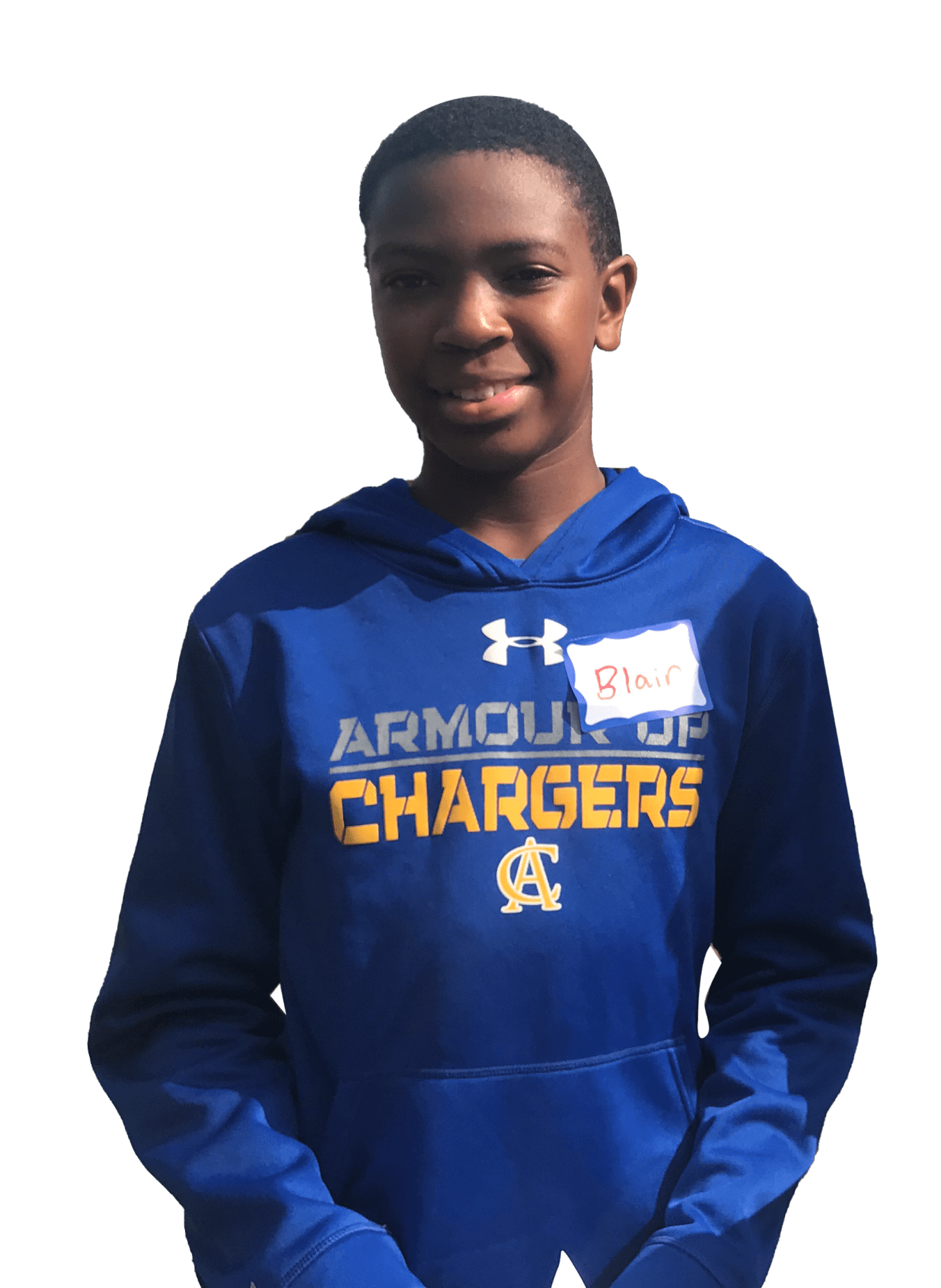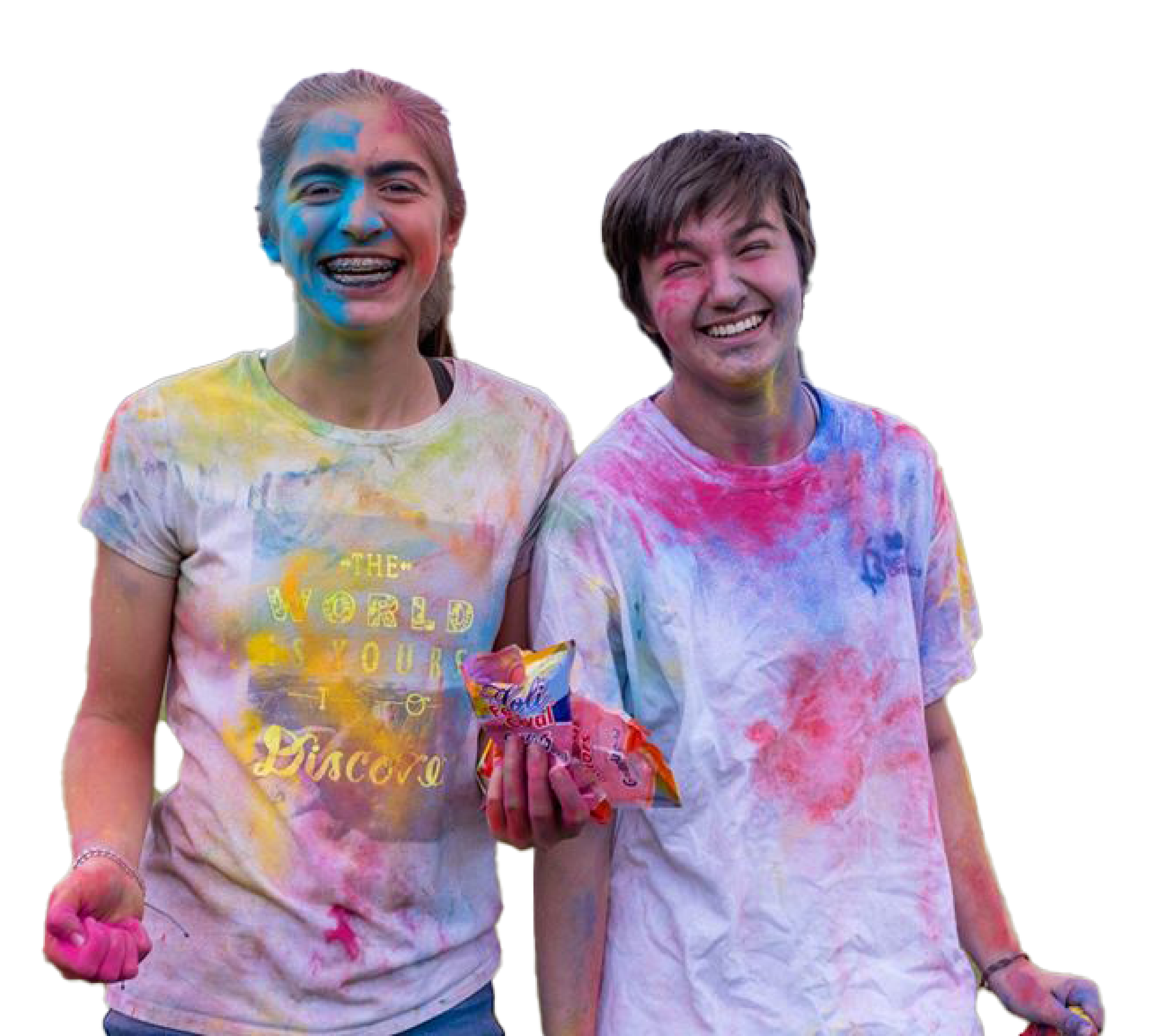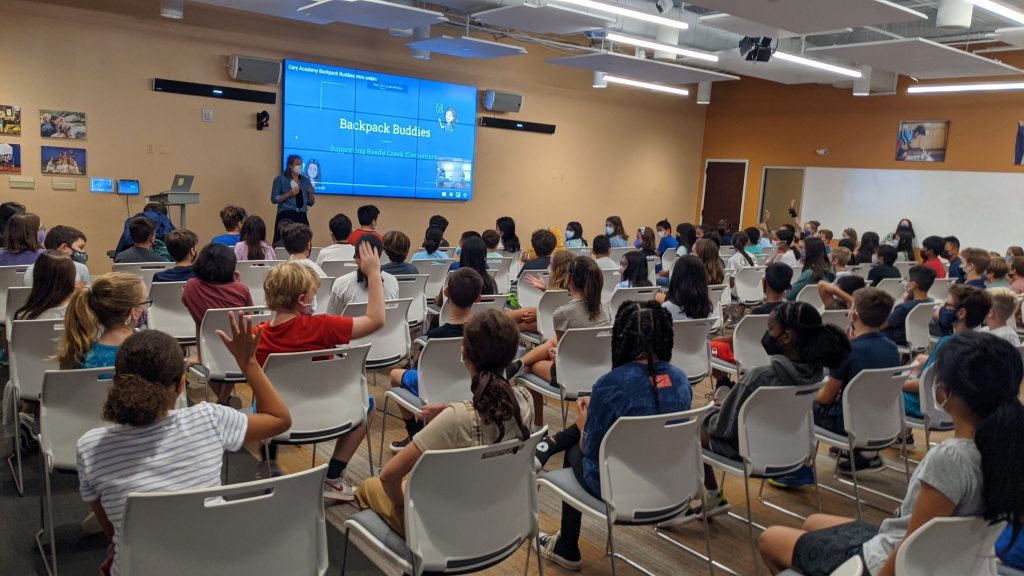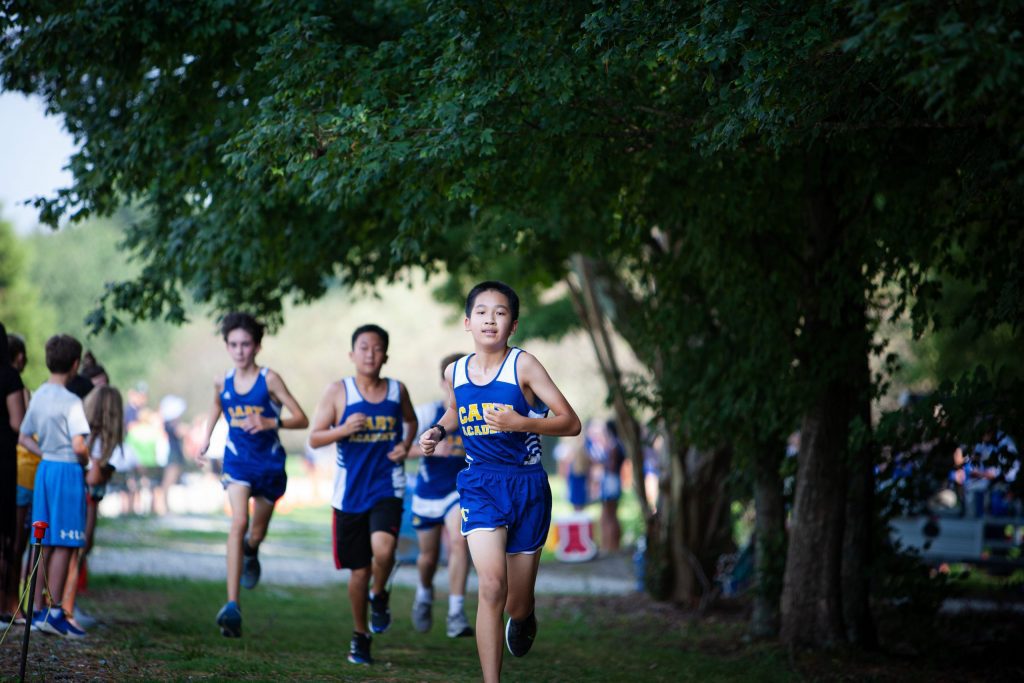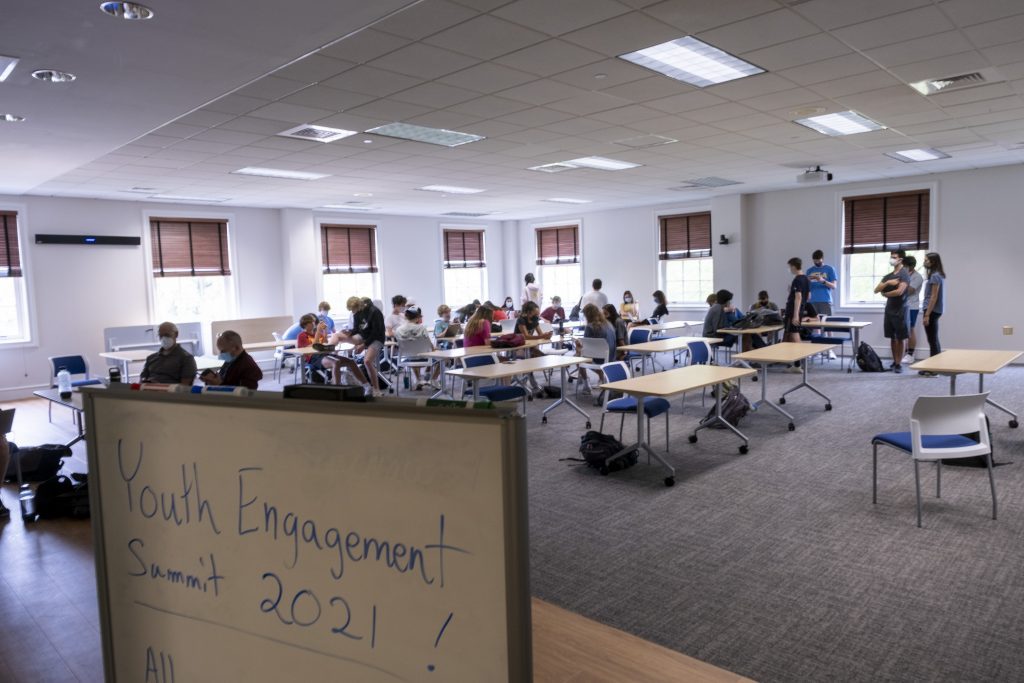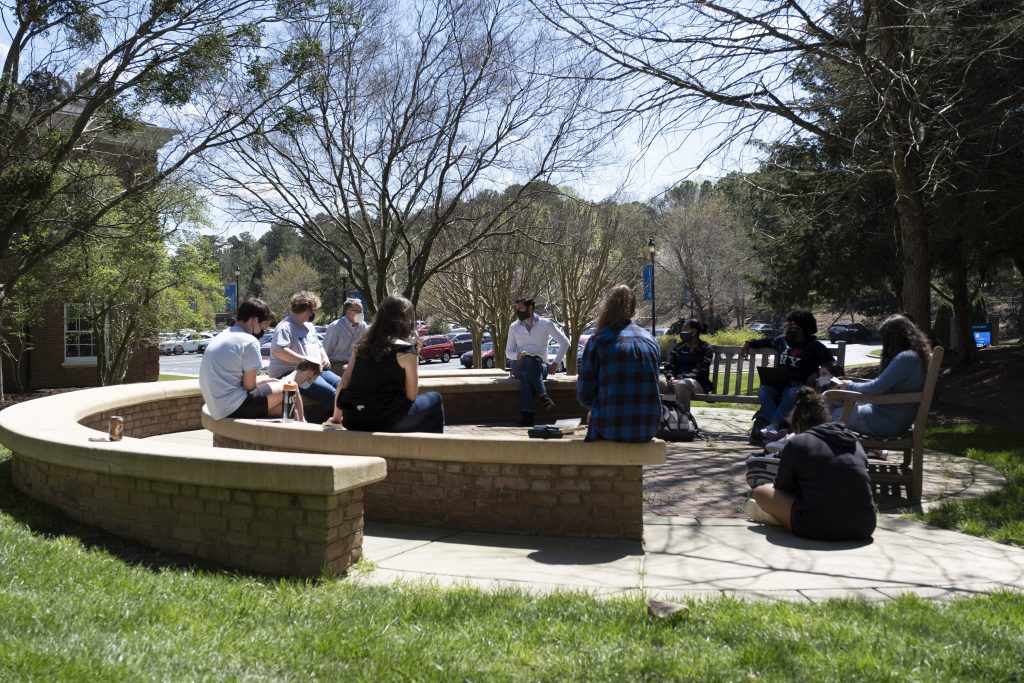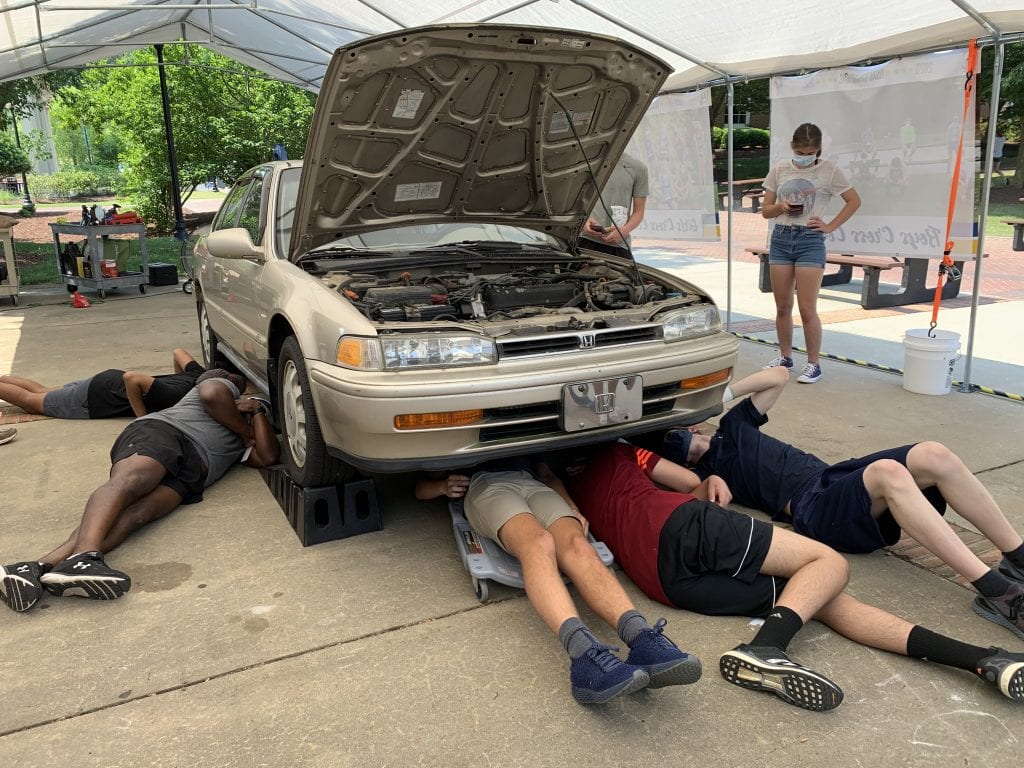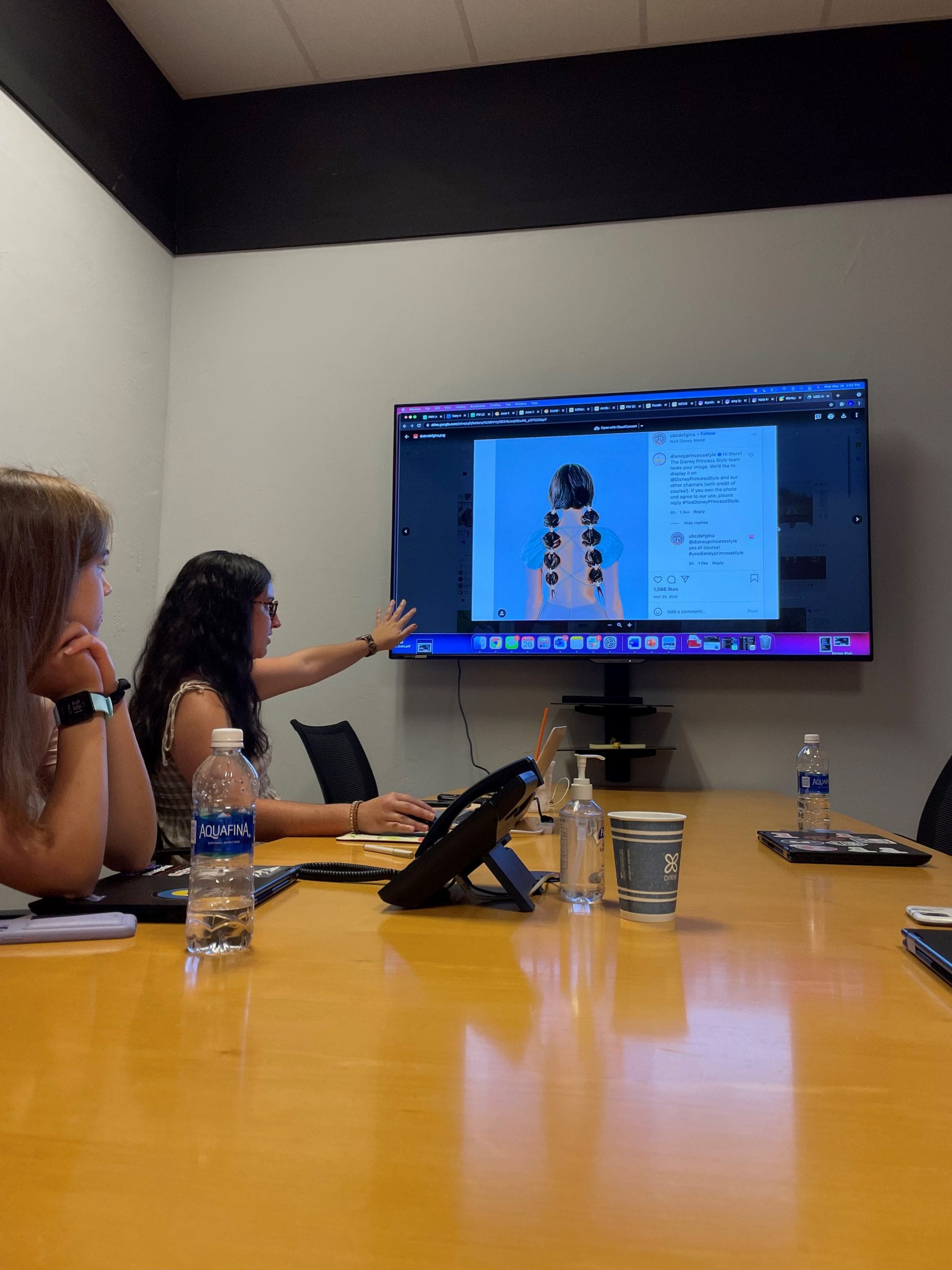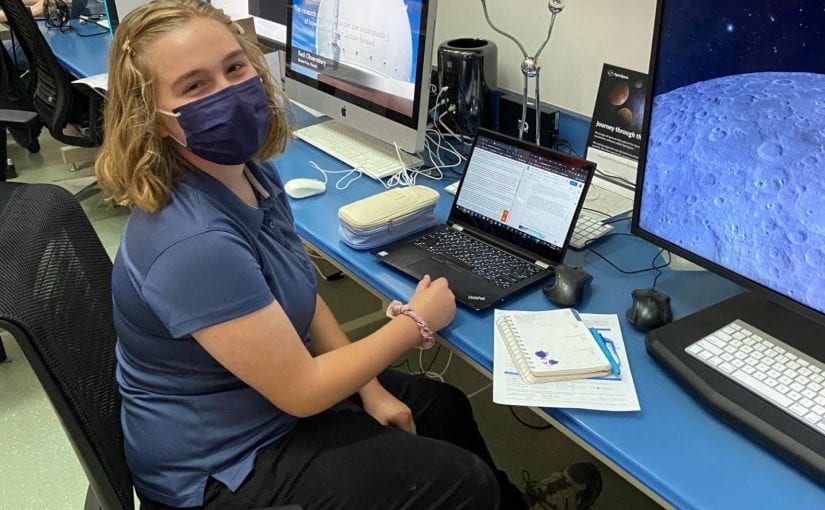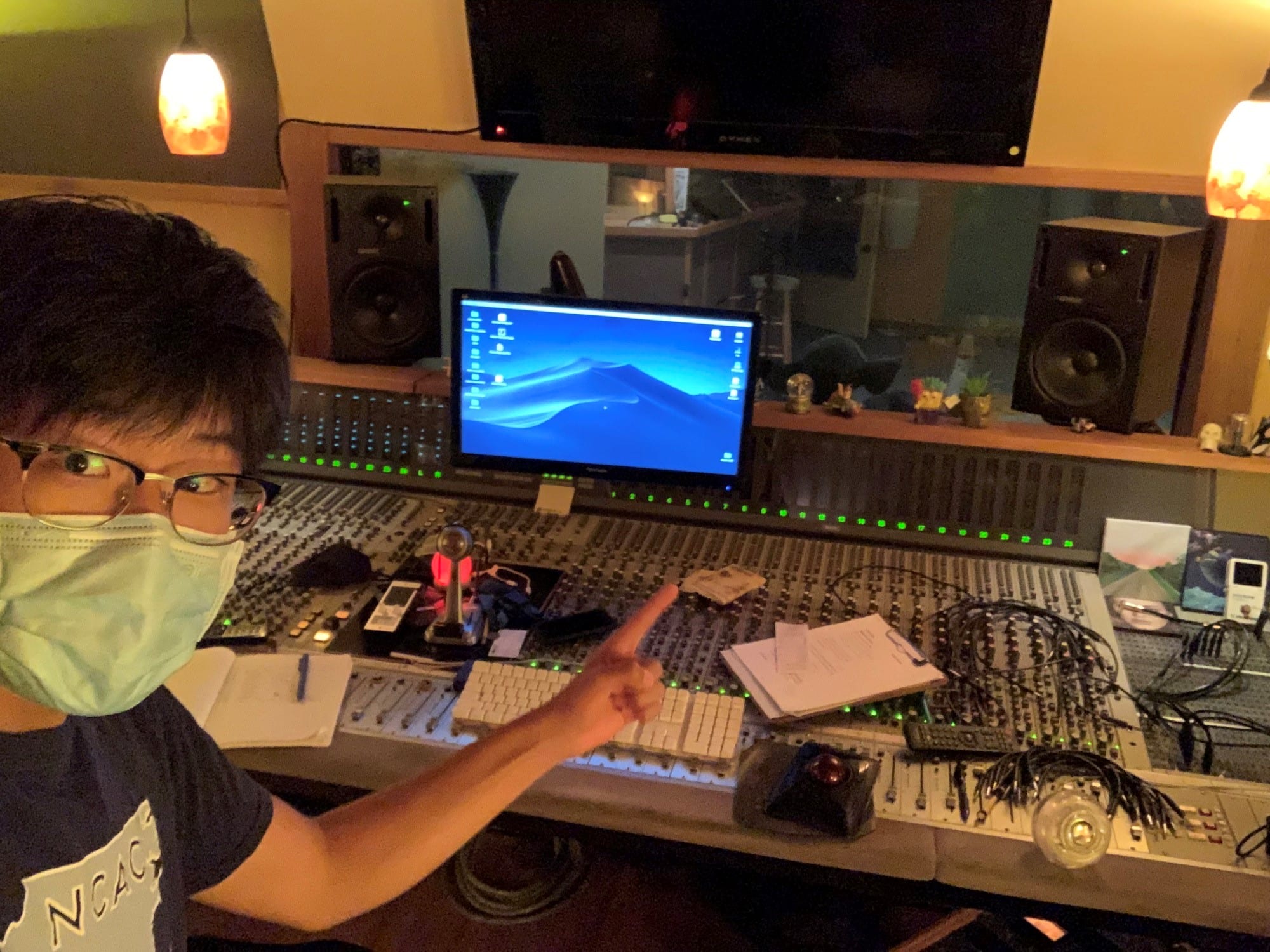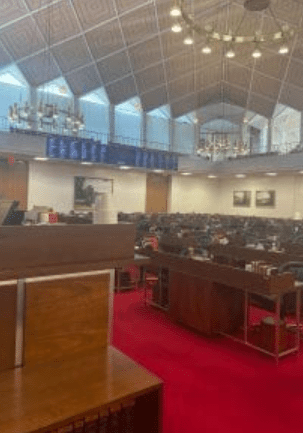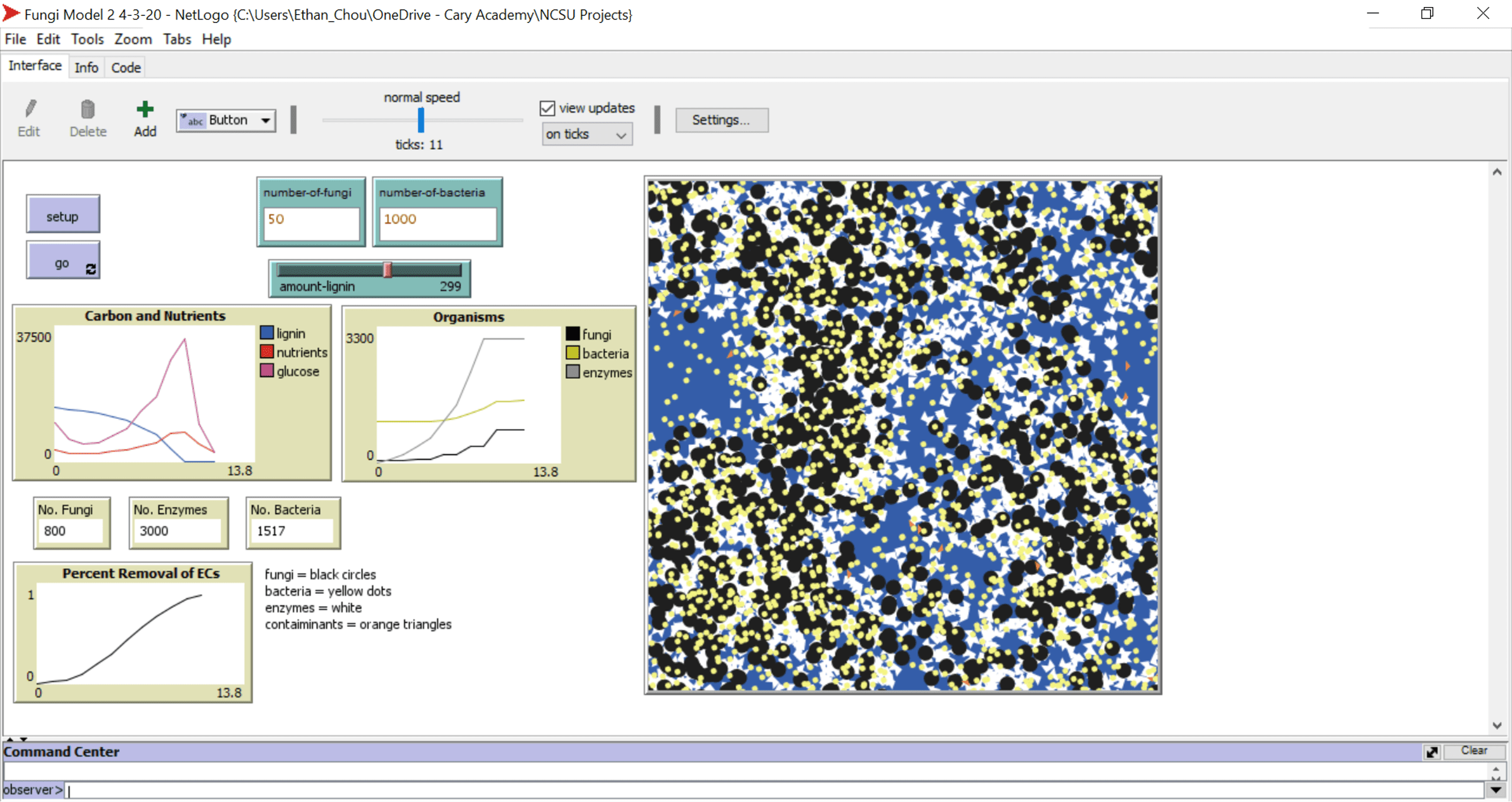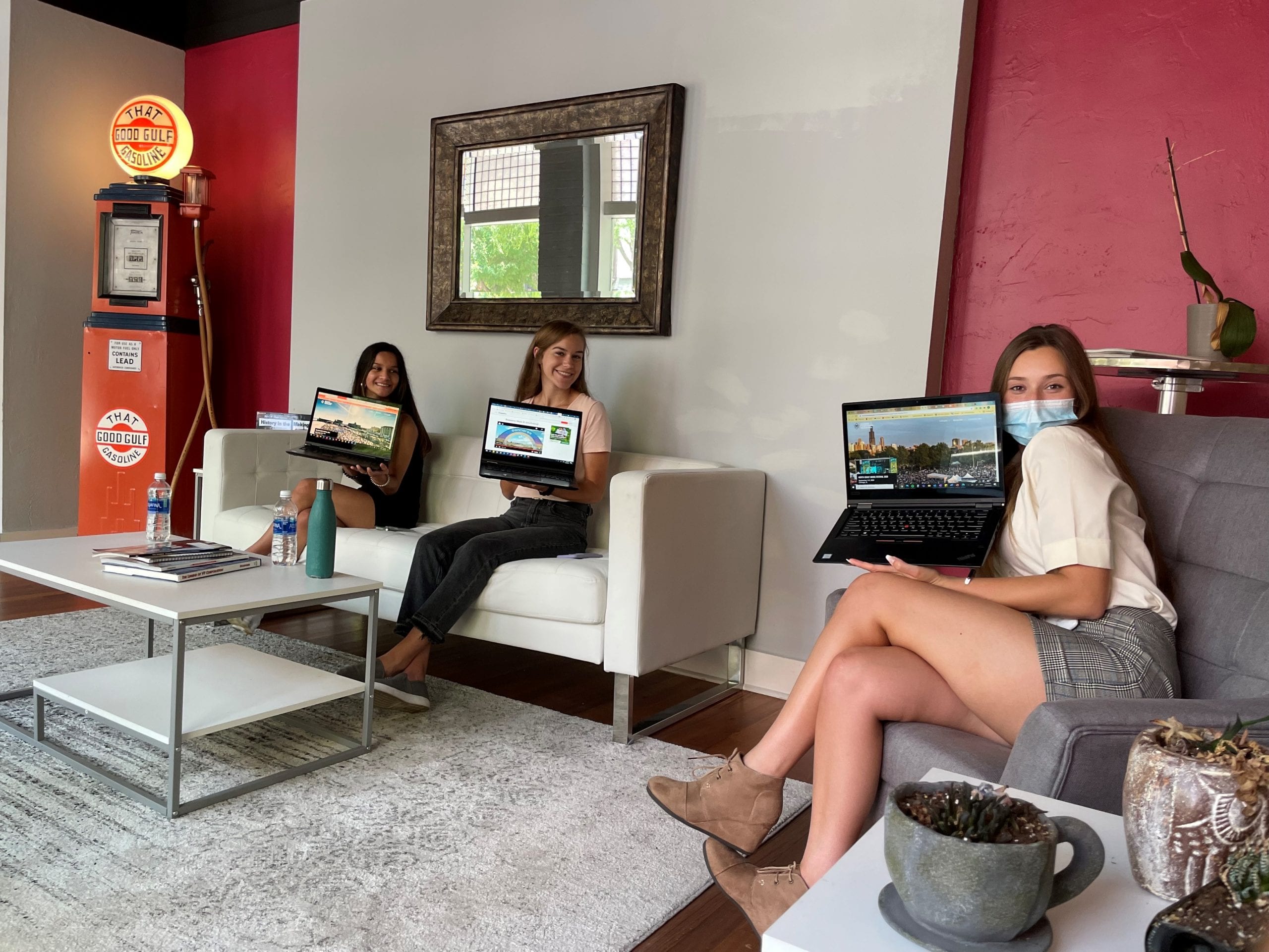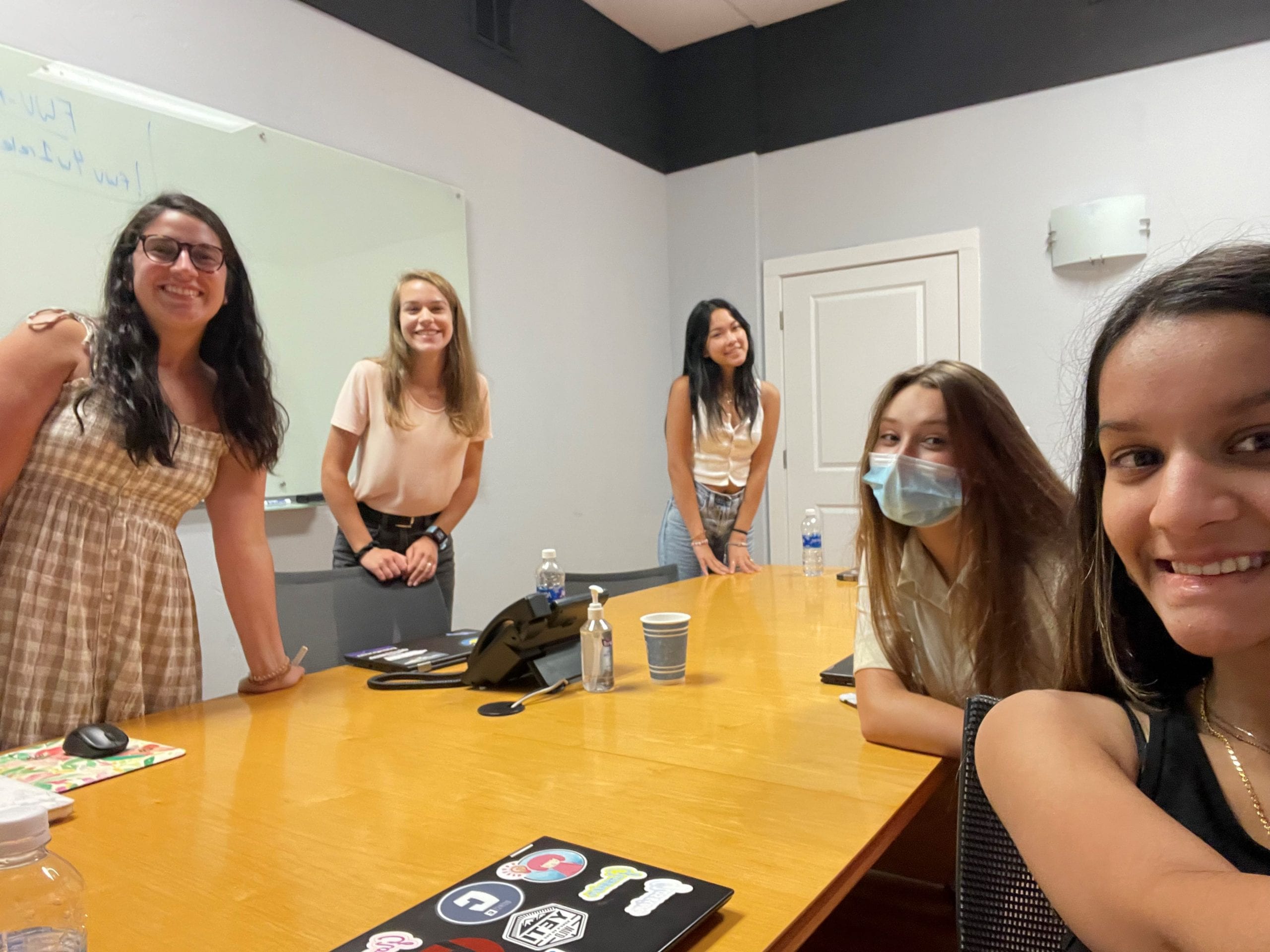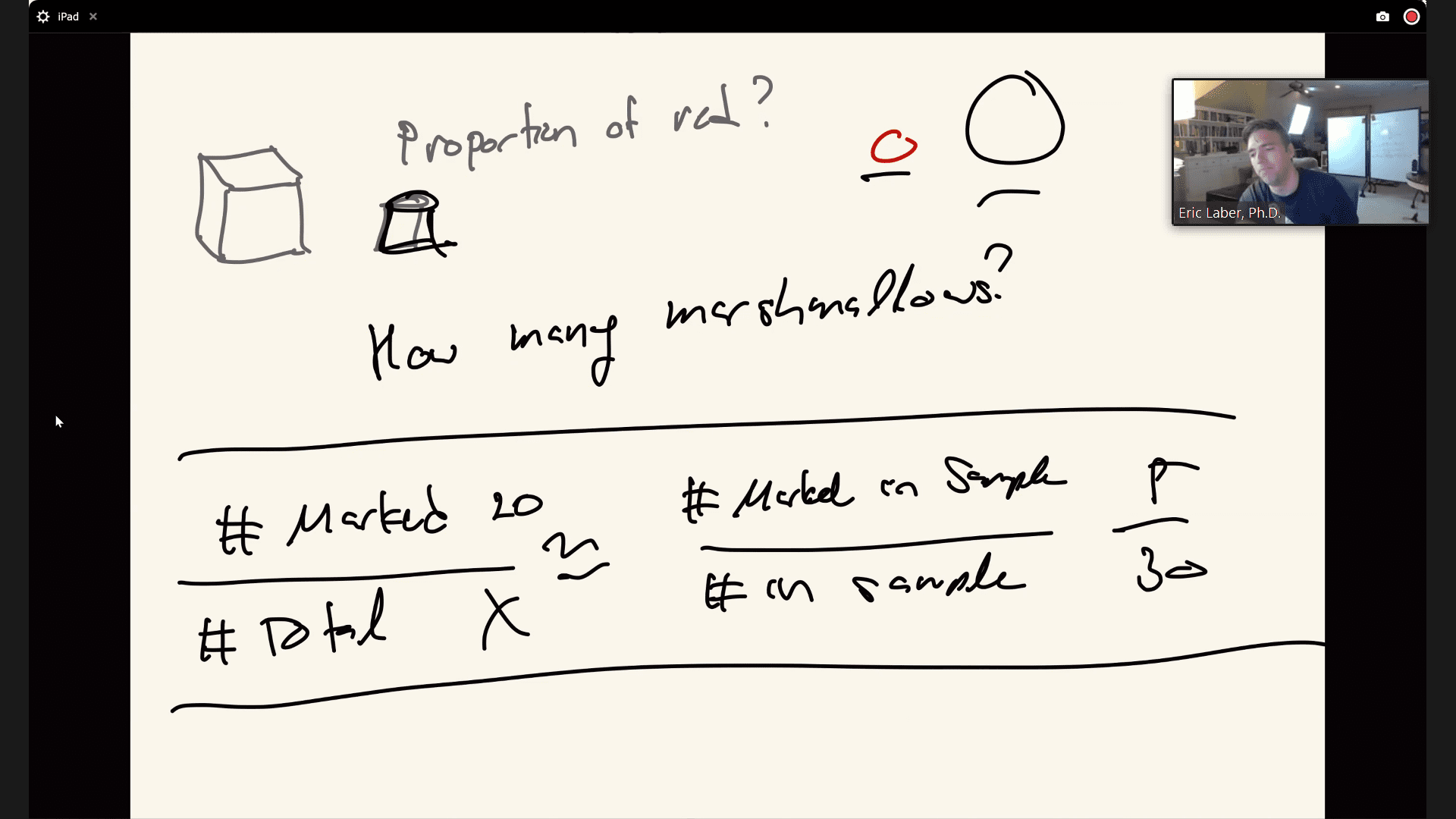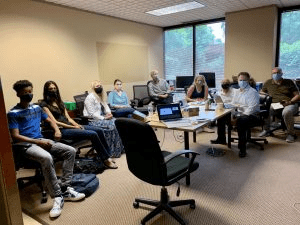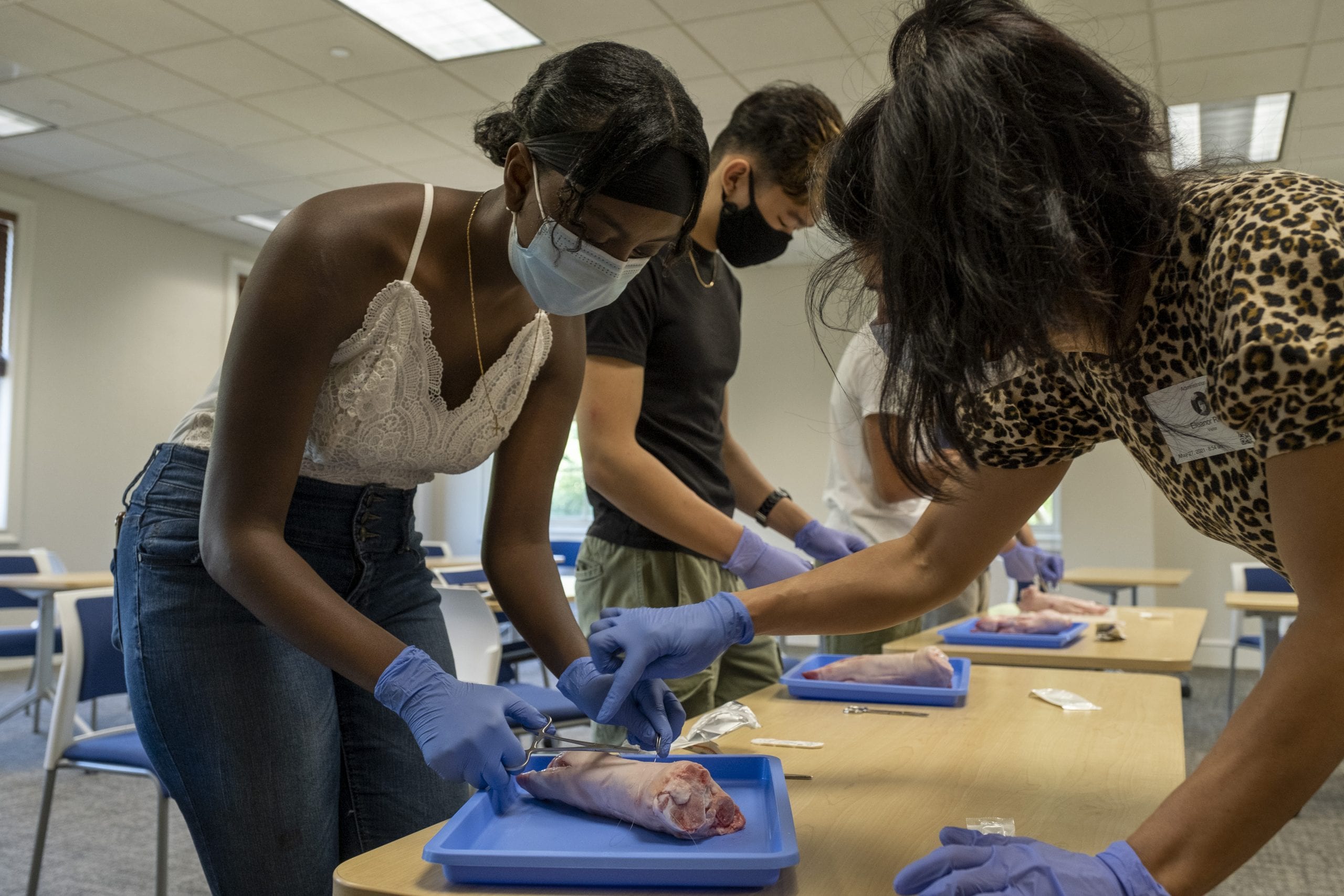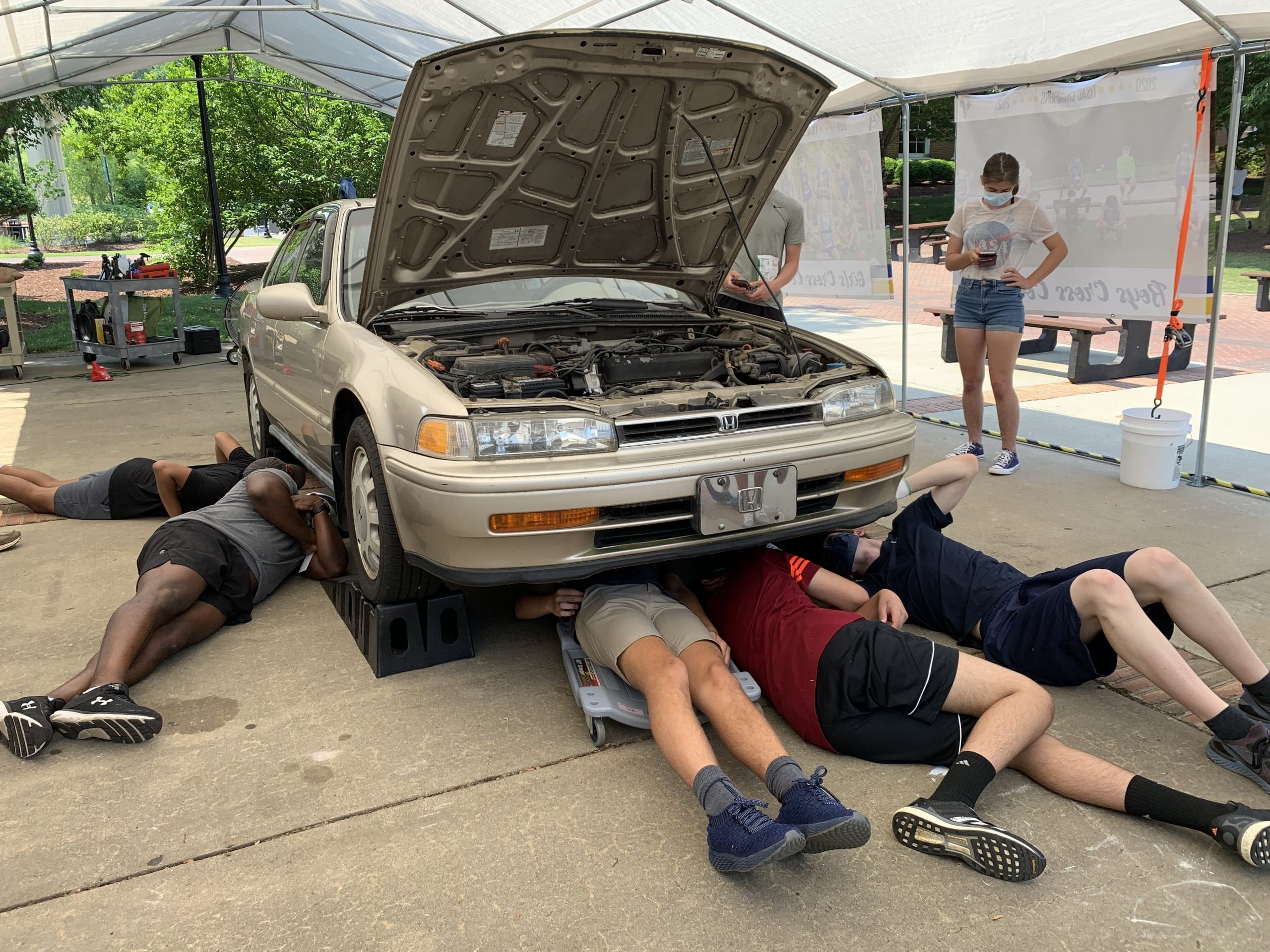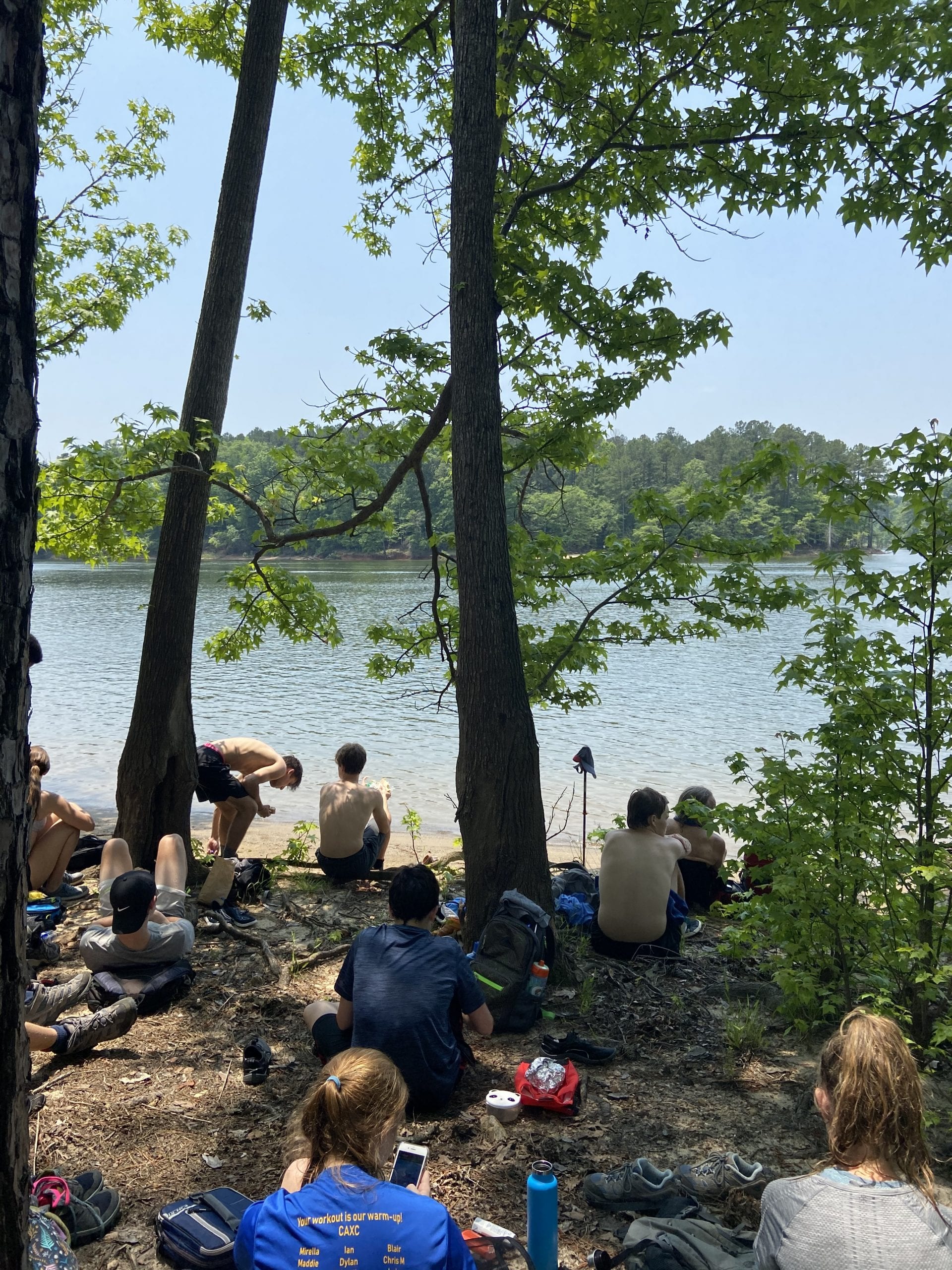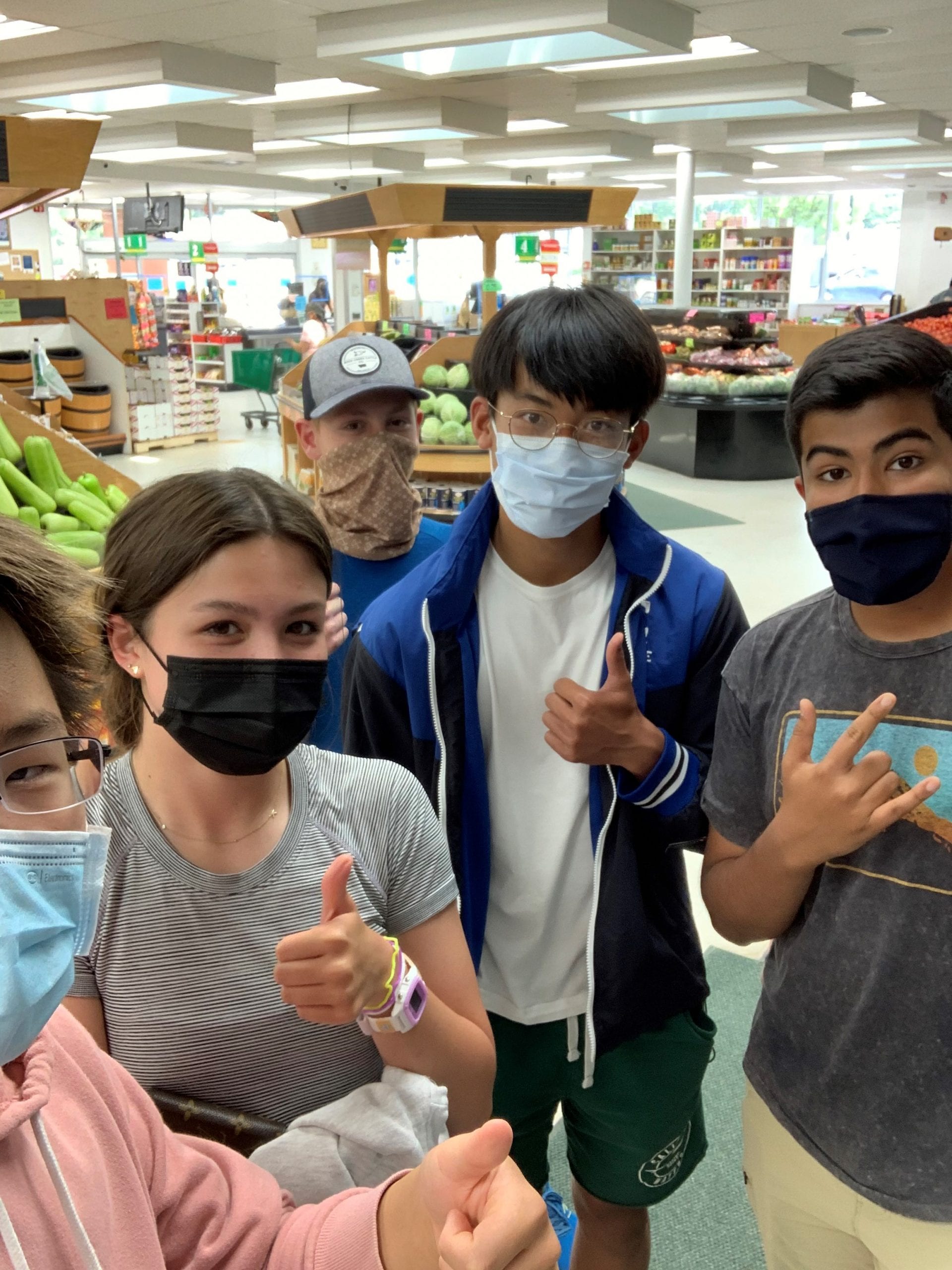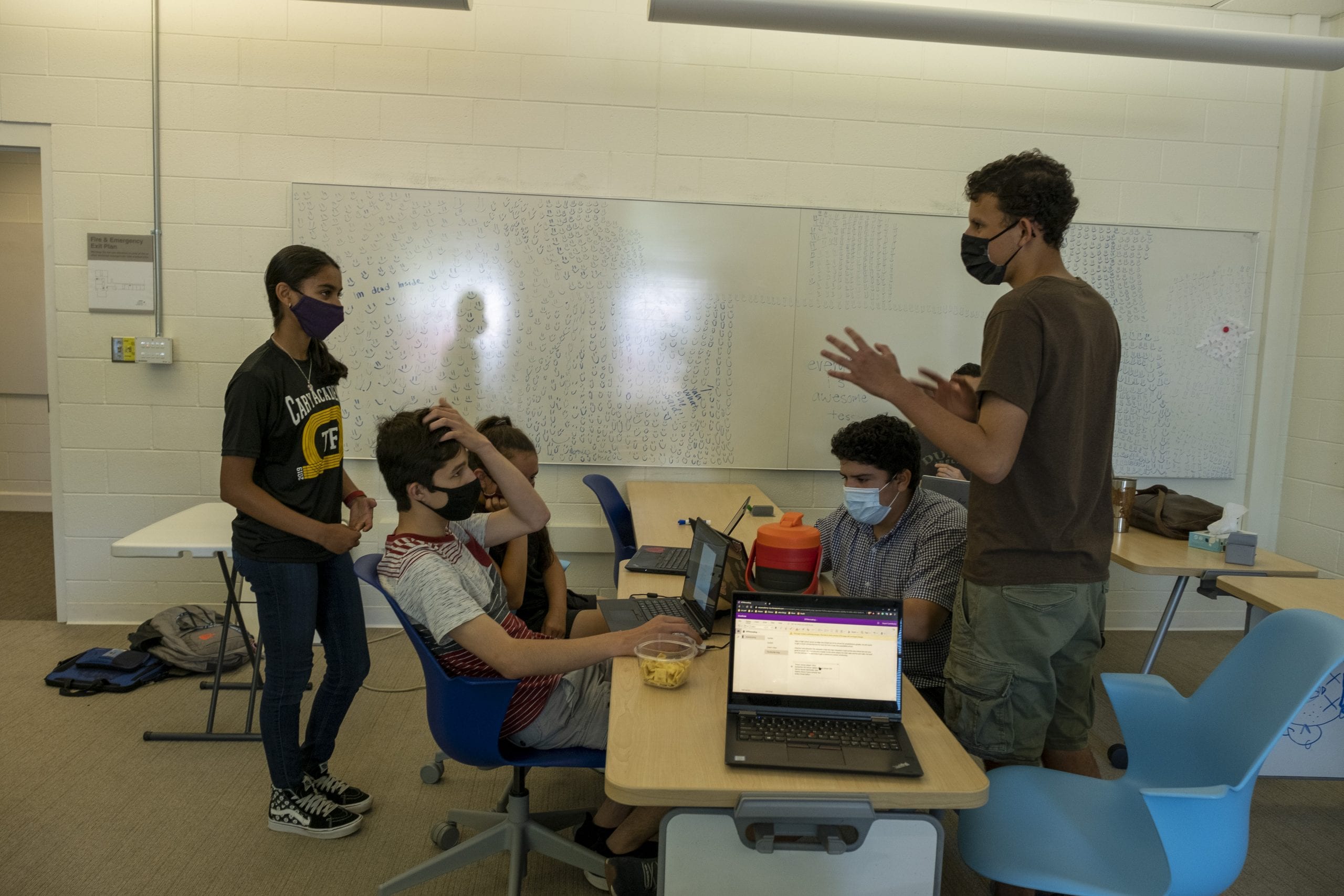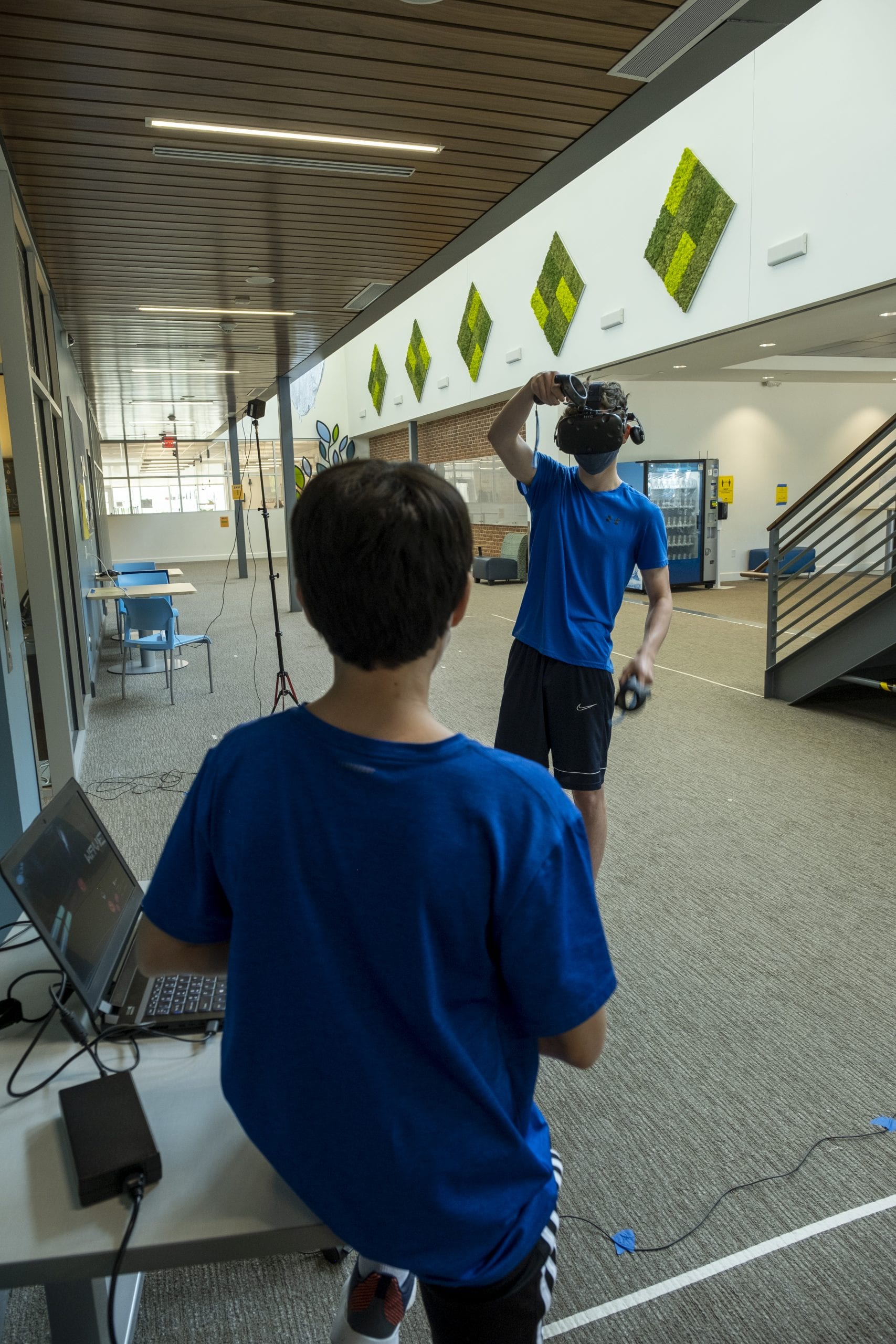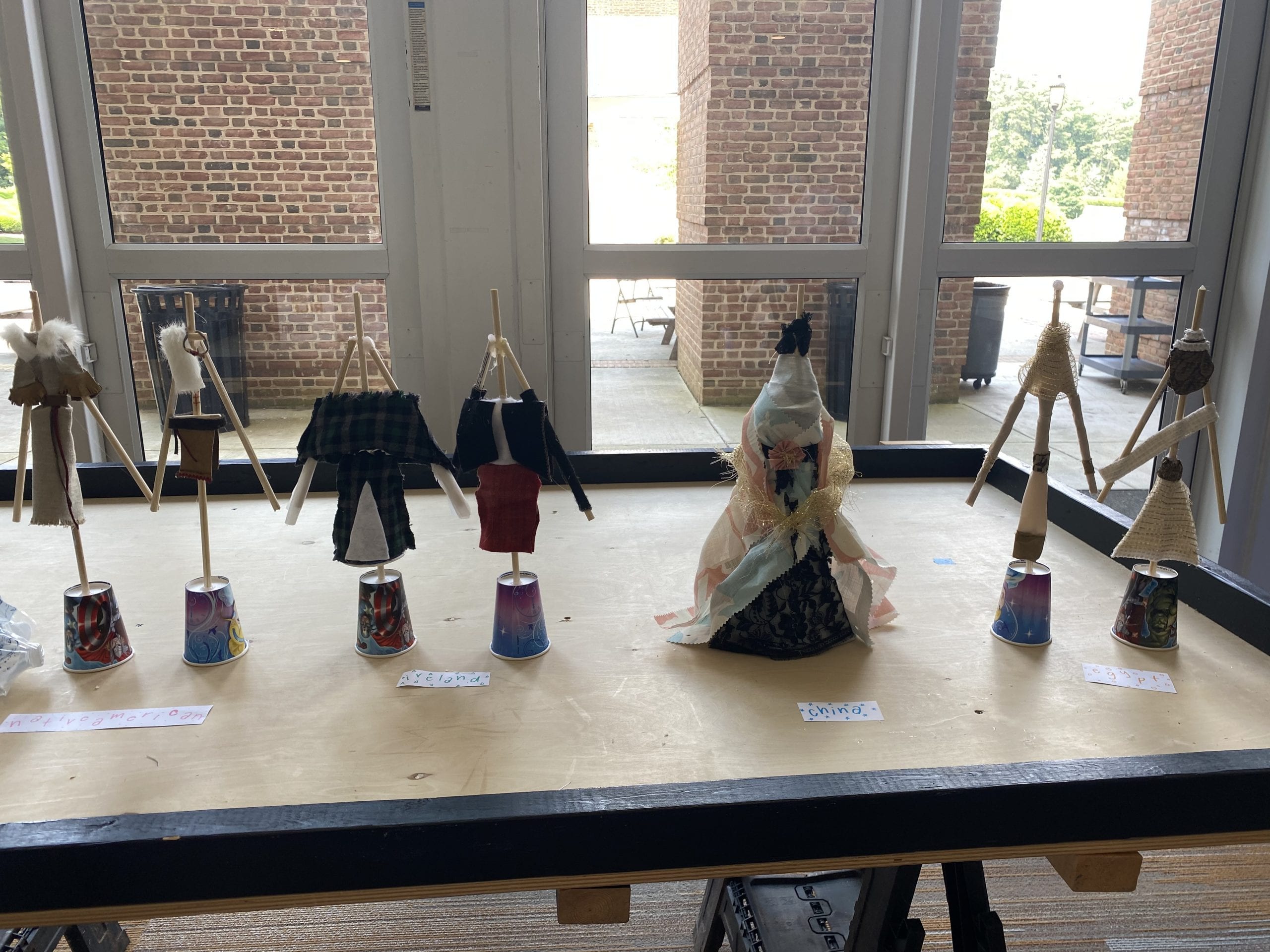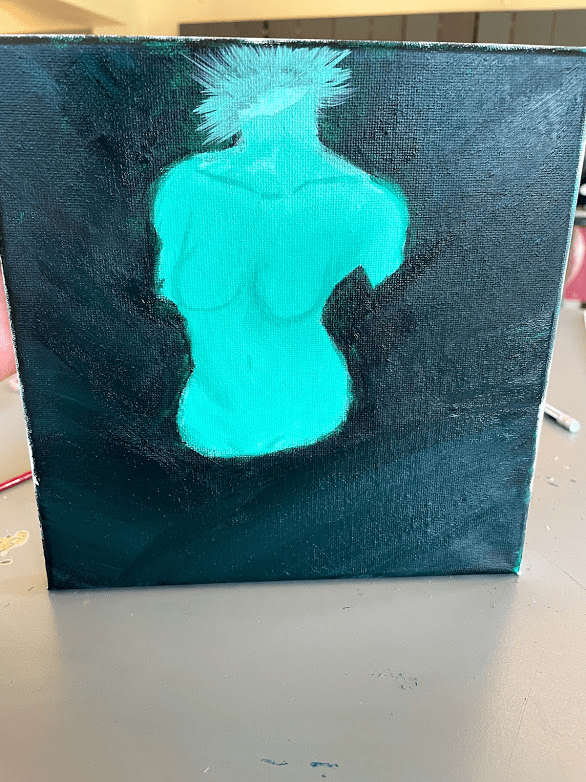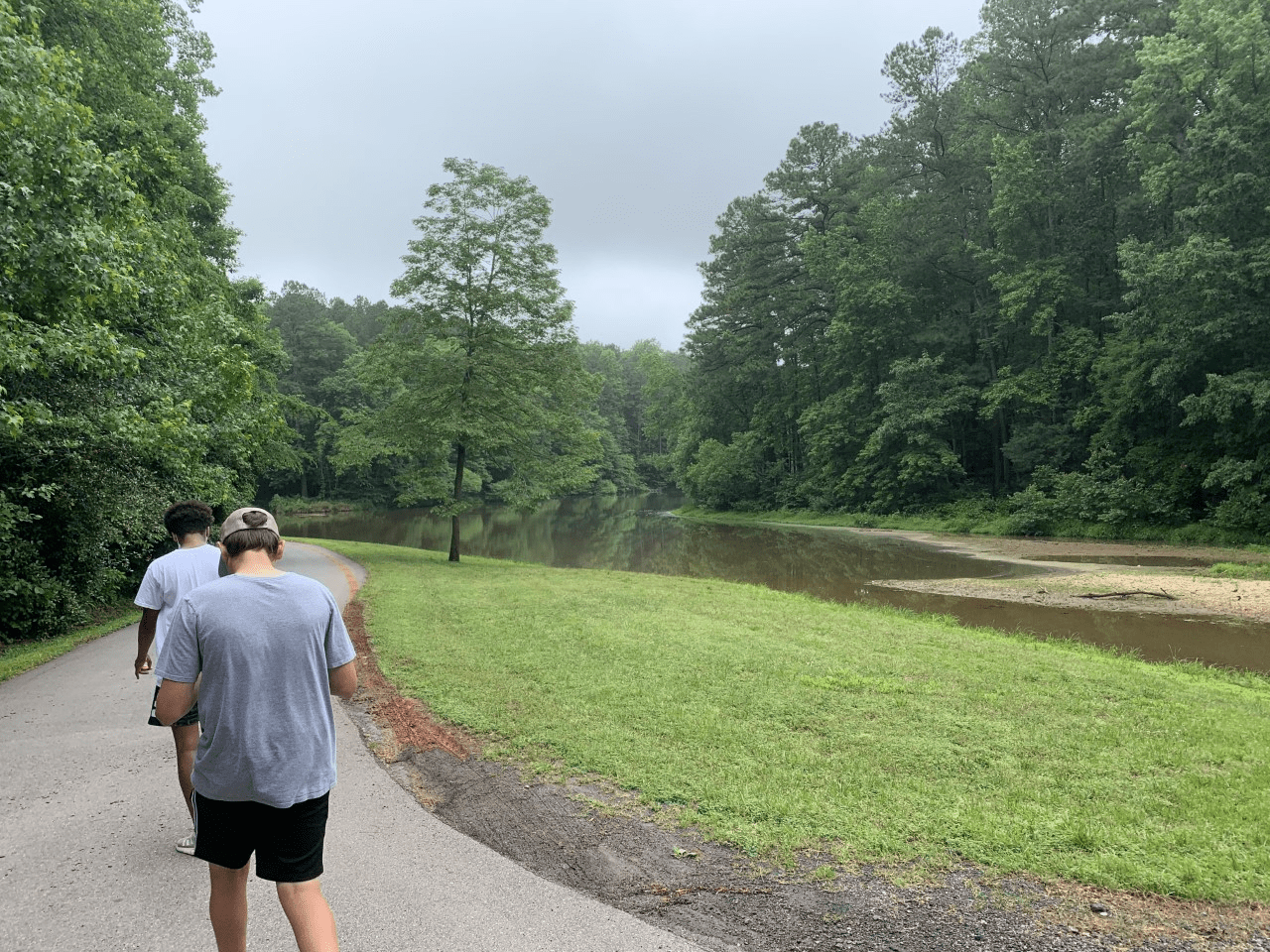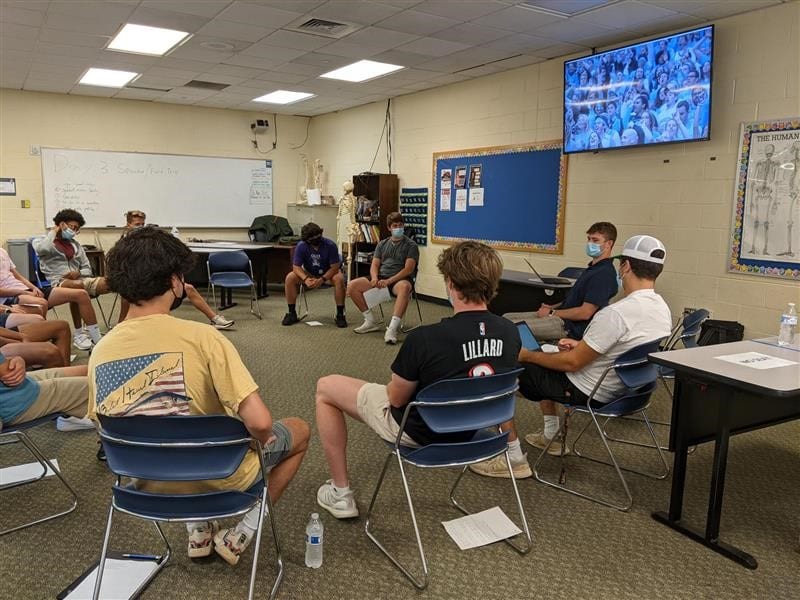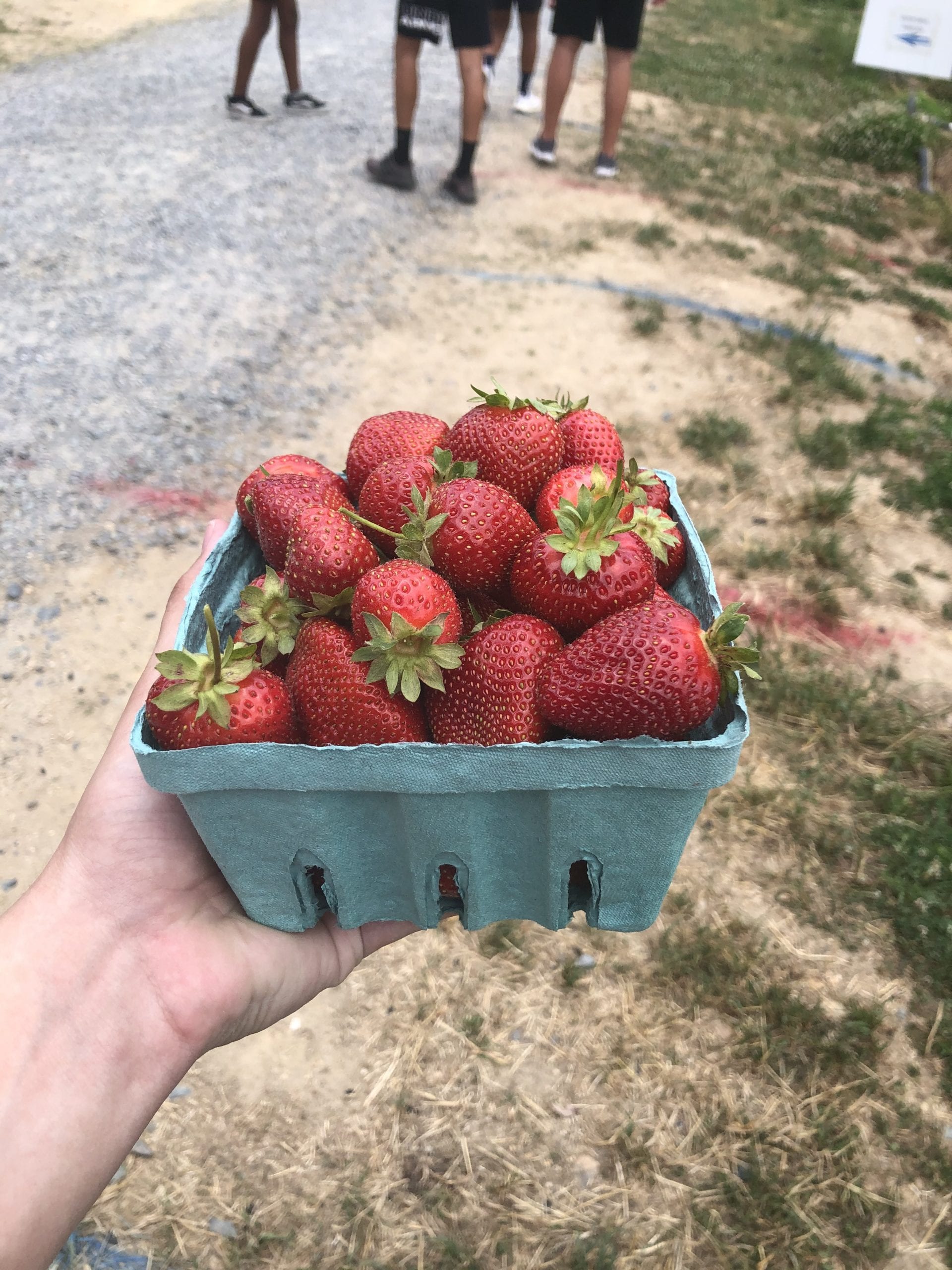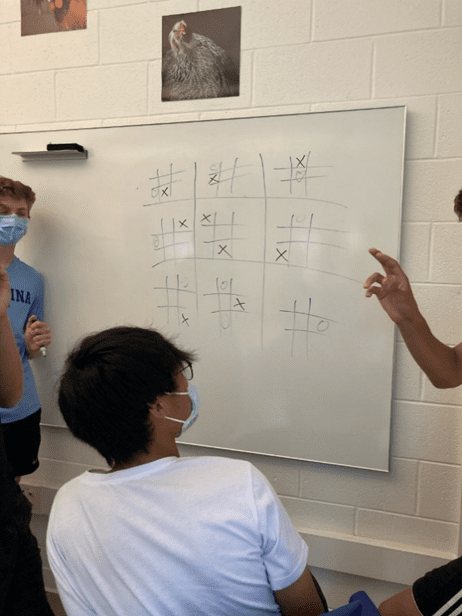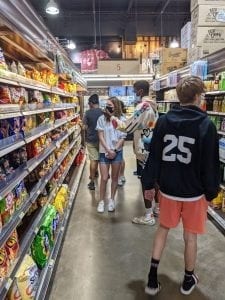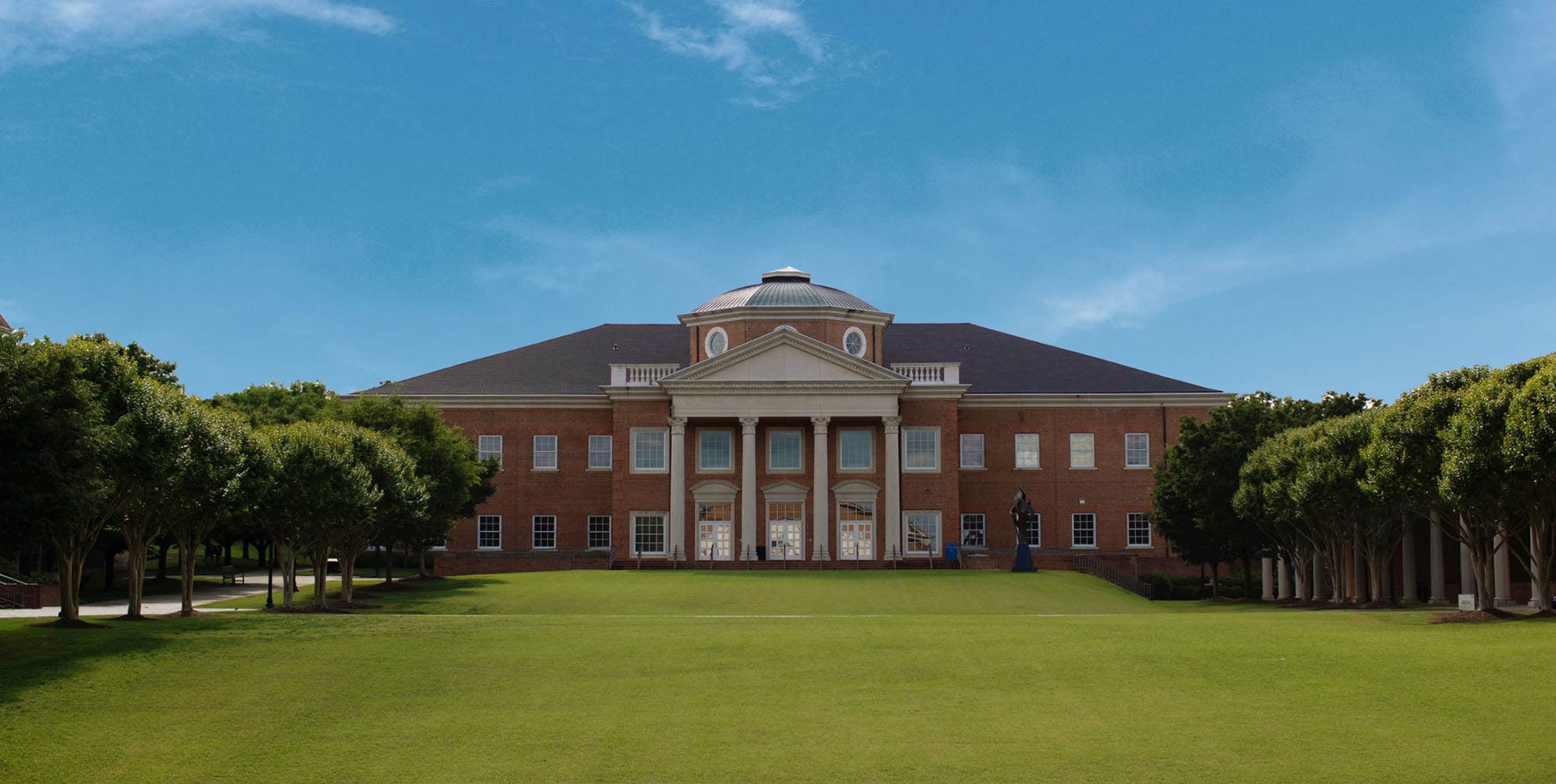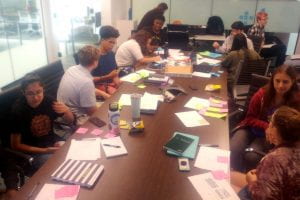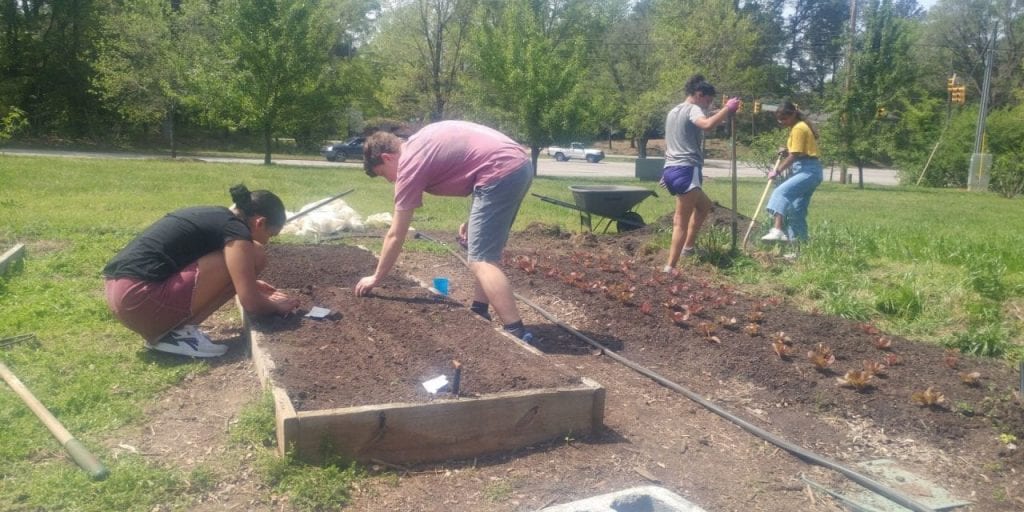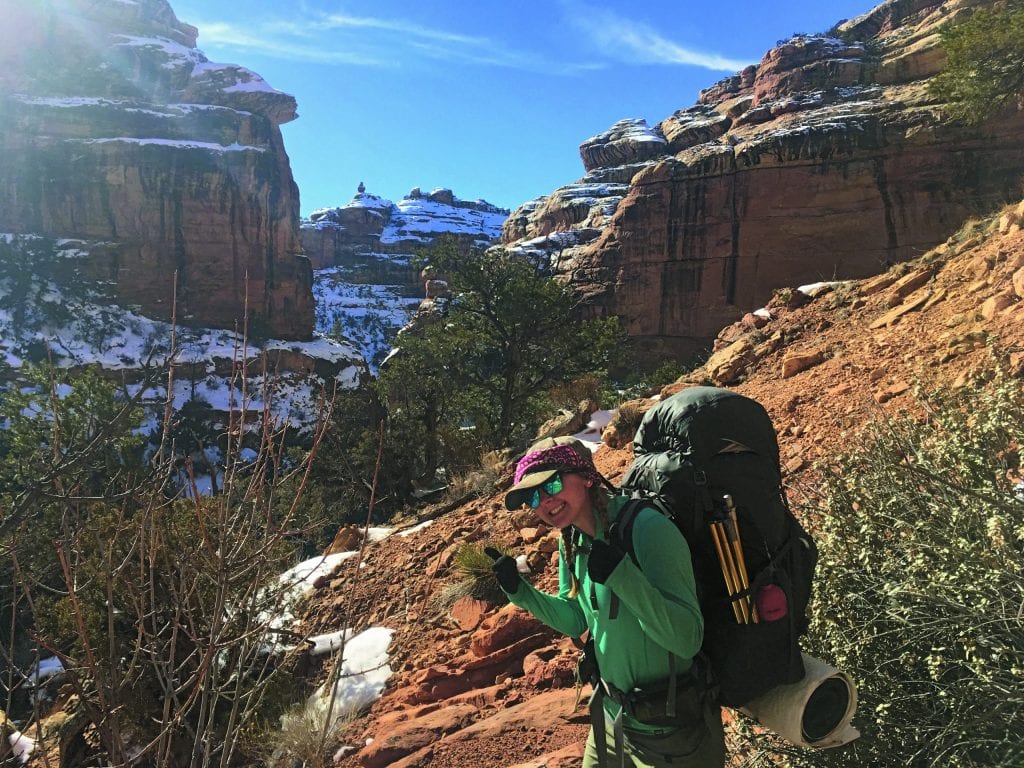For Upper Schoolers, the last two weeks of the school year are filled with lots of opportunities for experiential learning courtesy of Discovery Term (DT), Work Experience Program (WEP), and the Youth Engagement Summit (YES). These programs, coordinated by our Center for Community Engagement, help students to flex their leadership skills, explore new areas of interest, and take their learning to another level—whether in the lab, wilderness, halls of justice, local markets, studios, or beyond.
Enjoy these student voices as they share just some of what they are exploring / making / and experiencing in WEP and DT, and look for a wrap-up later this summer on YES. (To hear from other students, check out blogs.CaryAcademy.org/cawep/ and blogs.CaryAcademy.org/discovery-term/ where all students are blogging their learning journeys):
Work Experience Program
I’m working with the Town of Cary Public Works team with a focus on turf/facility management. . . I have gained lots of insight on techniques, processes, the science that plays into creating high quality turf for the playing surfaces. I have been surprised by the precision in every action of the industry and hope to continue to learn more about the industry and management processes.
— Lawson Wheeler, Town of Cary Public Works
I’m job shadowing at Osceola Studios. I’ve gotten the chance to work with several incredibly talented artists to turn their ideas into polished tracks. Dick Hodgin, the audio engineer, is (for lack of a more descriptive term) a wizard. Not only in his musical expertise, but the way he connects with each artist, seemingly understanding the songs better than they do.
— Alex Lim, Osceola Studios
I am helping Homestead Sage build an online presence (website, social media, etc.). Right now, I am working on a resource library on UV-C light technology for their website. It’s been really eye-opening!
— Sophia Liu, Homestead Sage
I am researching and exploring the different parts of Senate Bill 300, which focuses on adding new law enforcement requirements, decriminalizing certain local offenses, as well as addressing constitutional issues with satellite-based monitoring. I got to meet Professor Markham and hope to attend a general assembly meeting and listen in on a court case.
— Gabriella Cicuto, Criminal Justice Reform with Professor Markham at the University of North Carolina at Chapel Hill
So far, we have spent the time learning about how to put together presentations and pitches by researching an emerging technology called NFTs. NFTs are digital assets that use blockchain and crypto-wallets to function. We are researching how they work, how to make them, their environmental impacts, and their potential future applications.
— Sarah Haddix, Lenovo
I’m shadowing Guilford County Public Defender ShaKeta Berrie. I spent most of the day toggling between district court and superior court. I assist Ms. Berrie in finding her files, locating, and organizing her shucks, calling out the names of her clients to make sure they are there, calling clients who failed to show up to court, and watching other court cases. I learned about how important the 4th amendment is specifically to the work Ms. Berrie does in district court and how important a public defender’s job is to help protect and serve the public.
— Sierra Nesbeth, Guilford County Courts
At French West Vaughan, we have been given the wonderful opportunity to shadow several producers, managers, and executives in the different departments of French West Vaughan, an accredited public relations and marketing agency. The Creative Team, Media Team, Account Team, and Social Team all focus on different areas of the marketing process, and I have enjoyed learning the responsibilities and strategies of each department. It amazes me how, in the end, the teams collaborate to execute campaigns, design websites, and build successful brands.
— Kendyl George, French West Vaughan
Our group is currently doing research on the effects of Permethrin (a chemical commonly found in mosquito nets) in Sub-Saharan Africa, to understand the benefits of Vector Textiles’ net which is produced without chemicals. It is fascinating to connect both the direct impact of the pesticide on humans (ingestion/contact) and how the environmental effects indirectly affect humans. So far, the experience has been wonderful as it gives me a better sense of what a future in STEM-research may entail.
— Vinith Upadhya, Vector Textiles (Environmental Modeling)
These past few days, I had the pleasure of witnessing our judicial system first-hand. My host, Judge Davidian, has been kind enough to allow me to witness proceedings in his courtroom, and I was able to see cases of all varieties, from civil domestic violence cases all the way to felony pleas. Not only did I gain more of an insight into the laws and workings of our judicial system, but I also was able to learn more about Judge Davidian’s past career as a Navy JAG, which was very interesting as well!
— William Su, Wake County Courts
My WEP is with Representative Grier Martin and his Legislative Assistant Chris in the NC House of Representatives. So far, my experience has been very eye-opening. It’s very cool to see the bills come to life. I have attended a committee meeting, a press conference, some constituent meetings, and visited the DMVA. Tomorrow, I get to attend session. I hope to learn more about representative and lobbyist interactions in order to get bills passed.
— Bella Nesbeth, NC State Legislature
I’m working with Dr. Tarek Aziz, a professor at NCSU who is doing research into the viability of using white rot fungus to treat pesticide contamination in water. The work we are doing involves us tweaking the code of an agent-based model to add additional features to make it more realistic.
— Ethan Chou, Aziz Lab, North Carolina State University
I’m working in the writing industry with a publisher, authors, and a bookseller. I’ve gotten the chance to meet with Mindy Quigley, a Virginian author of cozy mysteries who has given me lots of great advice and connected me with some of her colleagues in the writing field. . . I’m also meeting with Abby Muller from Algonquin Publishing and to prepare, she’s given me a manuscript to read and write a reader’s report (a standard publishing task done by interns that tells the editors whether they should read the book or not) including feedback and a general plot summary. Then, I will be working at Flyleaf Books for a day. I’ve learned a lot about being an author and an editor and I look forward to the rest of the next couple weeks seeing different experiences in all parts of the industry.
— Christina Polge, Author and Publishing House
So far, we have learned about all the different architectures at Cisco from security (Umbrella/Duo) to Meraki and AppDynamics. It has been incredibly interesting to see all the amazing things that these Cisco products can do to simplify and streamline all aspects of a business or company.
— Grace Jaeger-Sandruck, Cisco
My work experience is with the North Carolina Symphony as a Performing Arts Management intern. I will be exploring and working with all the different areas under arts administration (marketing, philanthropy, education, communications and more). I have played violin very rigorously for almost all of my life, so I was curious to learn more about other behind the scenes aspects of the arts and music that allow the music to ultimately be heard. So far, I’ve met with a handful of prominent people to discuss their work and have conducted some research and created archives. I look forward to the end of WEP for a live concert at Koka Booth that I will help run!
— Kali Bate, North Carolina Symphony
My group and I are figuring out the Unreal Engine, the game engine that EpicGames created and uses to develop and design its games, and working on Unreal Engine projects. By the end, I hope to have my project up and running (but not necessarily done because it simply isn’t feasible to prototype a whole game in two weeks), to have a better understanding of C++ code, and to have a little experience designing my own avatars and scenes. In the future, I’d love to use the skills I acquired to learn more C++ and explore digital art further.
— Julia Huang, Video Game Development with Steve Polge, an EpicGames senior programmer
Discovery Term
I think the best experiences and takeaways in the Health and Fitness DT so far would be understanding the underlying ingredients in foods that we commonly enjoy and how all ranges of exercises can prove to be both challenging physically and mentally. What initially drew me into this DT was wanting to get a head start on a healthy lifestyle through and for the 2021 summer, but within the few days of this DT, I can almost certainly say that I will continue to use what I’ve learned in this DT for the rest of my high school career, hopefully taking some aspect of it to college.
— Jared Seidel, ’22, Health and Fitness Leader
My DT is all about trying new things— by learning about global cuisines from either informative videos or classmates, and then getting a firsthand experience by going around the Triangle and tasting different foods from different cultures. . . I think I am most surprised by how similar certain things are across some cuisines. There is a lot of difference— be it in the types of food, the tradition surrounding how you eat, when you eat, and even how much you eat per meal; however, the similarities are there too, from curry being popular in both India (as a dish) and in Germany (as a snack— currywurst, which is sausage in curry sauce), to cultures all across the board having some type of flatbread special to their cuisine.
— Jasmine, ’24, World Cuisines around the Triangle
Currently we are making an escape room in virtual reality (VR), and learning how to use Unity VR software to make a VR game, and how to set up VR. . . I signed up to do this because many of my friends are into coding and computers and I wanted to give it a try; I thought this would be the perfect way. Also, I wanted to do this because I wanted to know if I wanted to do something with VR or video games in the future.
— Adora Koonce ’24, Into the World of Virtual Reality
As I am new to the school, this is my first time ever experiencing a course like this. In general, my DT has been extremely fun so far. As there are no homework and tests, being able to learn freely without worry has opened a new perspective on learning for me. Going to school every day has felt like spending time pursuing my interests instead of attending mandatory classes. I am thoroughly enjoying this course.
— Kayleigh Ko, ’24, Fashion Frenzy
Our Discovery Term has touched on fashion throughout different cultures, discovering our personal preferences in clothing and design, and learning about the differences between high and fast fashion. We have taken excursions to the Gregg Museum of Art and Design and a local thrift store to compose outfits with our personal style. We look forward to continuing to learn about how fashion can be demonstrative of traditions and local climate, as well as acting on our understandings through a variety of fun and creative projects.
— Caitlin Smith, ’24, Fashion Frenzy
So far, I have learned how to canoe and steer a canoe the way I want, how to flip a canoe back over and get in safely without filling it with water, how to make a tent out of a tarp, and a lot about fish hatcheries and their effect on evolution and the populations of wild creatures. I hope to get more comfortable in natural bodies of water, and more comfortable in knowing how to safely maneuver in these bodies without putting myself or others at risk. . . . I’m actually going on a pretty long hiking trip this summer, so this course will really help me prepare for that and help me know how to do things like leave no trace, be safe in the backcountry, have fun, and take care of the environment. Something that has been surprising was how quickly you adjust to living or existing in nature, and I’ve learned that something very small can have a huge impact. Humans often try to control the wild because we want reliable, predictable safety. The truth is, however, the wild is best left wild, and the environment is best left untouched.
— Katie White, ’24, Waterpalooza
One thing I hope to get out of the trips is to get out of my comfort zone. During my experience so far, I have done many things I wouldn’t have done. For example, hiking, cliff jumping, and swimming out in the open. I learned how to face my fear of heights, being stranded, and snakes. Finally, I hope to learn more about how to camp overnight in the woods and to grow my mental strength through hiking and swimming.
— Ben Coley, ’24, Experiencing Wilderness
I have learned a lot about the format and processes behind making a film or screen play. I have learned how to write a script the right way and what goes into it, like the intention and obstacle. I have learned many new and different types of camera angles and shots, as well as how they affect the scene. We made our own mini film that lasts about 1-3 minutes, and we wrote our own scripts. We are about to start on the final project which is a 10-minute film.
— Josh Hanson, ’24, Filmmaking
I’m the course leader for Grease Monkeys, an automotive-focused DT. Though we have only had two days so far, we’ve been very productive. . . So far, they have learned how to find information about a specific car, use that information to find parts for the car, change brake pads, and change oil and oil filters. During downtime, between working on cars, students have been able to try their hand with a racing simulator. They have been practicing their racing techniques and putting their best lap times up on the board in preparation for our go-karting outing next week.
— Cy Reading ’22, Grease Monkeys Leader
So far, we have used short PowerPoints to educate the students about different East Asian countries and their cultures, and also performed hands-on activities. These included inviting in a calligraphy instructor to help us make ink paintings and calligraphy, doing chopstick relay races, making dumplings, sampling tea, and watching Asian movies. We also participated in many kahoots that introduce us to holidays, religions, and practices of East Asian people.
— Ella Zhang, ’24, East Asian Culture Leader
Franchise Mode has been just as much about discovery for me as a leader as it has been for the ’24rs taking the course. Our Discovery Term focuses on the components of media and marketing that enable a sports organization to be successful. We look at how things like branding, journalism, merchandising, and media creation all work together to create a cohesive identity for a team. Our most eye-opening experience came this Wednesday, when we had recent UNC graduate and Morehead-Cain Scholar Luke Buxton come and share his experiences with sports media with us. Luke talked to us about a non-profit he created called Uncut, which gives collegiate athletes a platform to discuss issues they’re passionate about, with subjects ranging from mental health to social injustice. Luke’s perspective was invaluable, it demonstrated how someone so close to us in age could make a meaningful impact within a field like sports media. Luke’s relatability left us all with a feeling of unprecedented inspiration and motivation to continue our two weeks of discovery.
— Hagan Aderhold, ’22, Franchise Mode Leader
In the past two days, we have played and discussed several strategy games, watched a movie, and gone on a field trip to an escape room. . . I hope to develop a new and better understanding of math in the world around us, which may help me see the real-world applications of the math that we’re learning at school.
— Eric Ye, ’24, Math Adventures
We are learning a lot about how to improve our health in all aspects—physical, social, and mental—and doing a mixture of activities that emphasize total health, such as kayaking, taking a yoga class, attending a cooking class, and going whitewater rafting. We were even able to hear from a speaker about neuroscience behind emotions. It has been really eye-opening to realize how much our mind affects ourselves. I will definitely use the calming techniques from grounding exercises, meditation, and yoga in my daily life when I get stressed. All in all, this course provides an outlook for emphasizing the importance for embracing our emotions and steps we can do to live BETTER.
— Tanya Sachdev, ’24, Live BETTER (Balanced, Exercise, Transform, Thrive, Experience, Relax)
We’ve been exploring the connection between art and emotion, the different techniques used to convey specific feels such as sadness, happiness, loneliness, and love. So far, it’s been a fairly relaxing process, while also being a great way to use the creative side of my brain that I don’t always get to use in other classes. Talking about reflection and incorporating that into art is a great way to relieve any built-up tension and a nice way to get out of your head.
— Renn, ’22, Feel the Art in Your Heart
So far, DT has taught me what it is like to be a leader and helped me explore what that entails. For example, I’ve had to schedule things on a larger scale, manage everything going on, and stay accountable for both our schedule and the kids in our DT. It’s been a lot of fun to learn and grow as I work. In the future, hopefully after this experience I can feel more confident in my capability of handling larger-scale events and leading them.
— Zoe Koo, ’23, Reuse, Recycle, Recreate Leader
